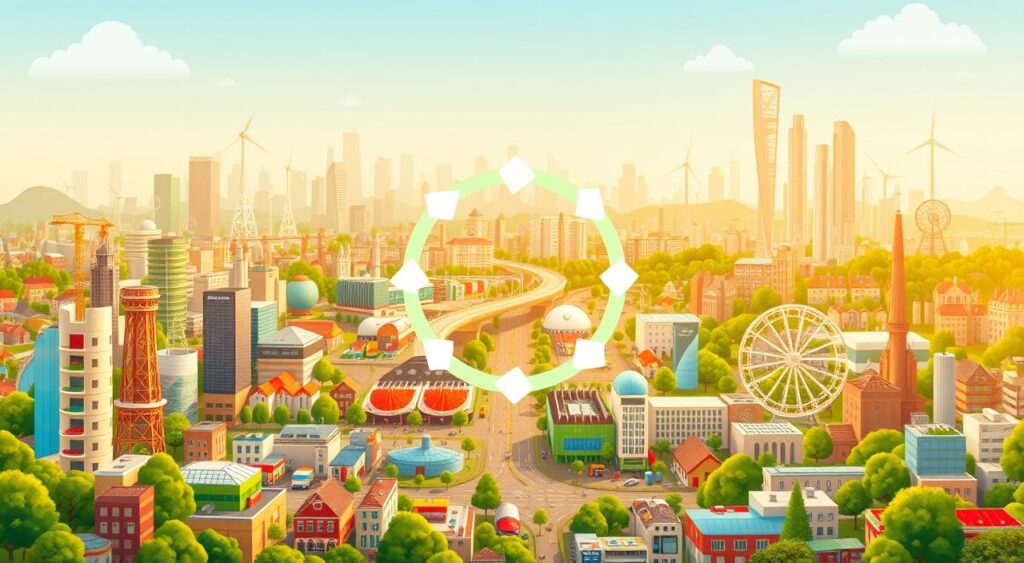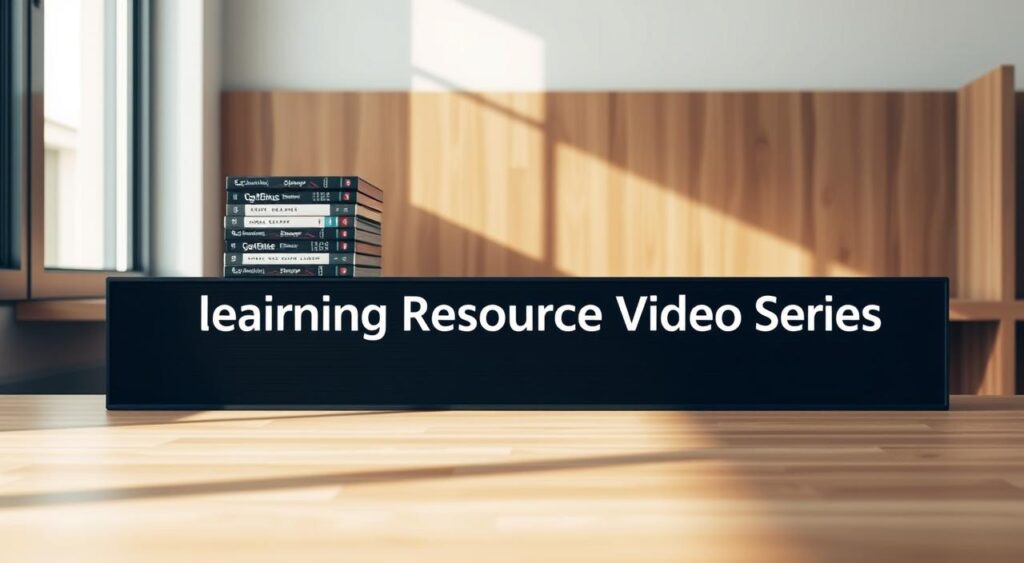The circular economy UK movement is reshaping how industries, communities and policymakers think about waste, resources and value. Instead of relying on the traditional “take-make-dispose” approach, this system keeps products and materials in use for as long as possible. It regenerates natural systems, reduces emissions, and supports innovation that strengthens resilience.

This guide explains the principles behind circularity, its role in tackling climate change, and practical steps businesses can take today. With UK policies, case studies and sector examples, you will see how circular models deliver cost savings, reduce risk and unlock long-term opportunities.
Key Takeaways
- The circular economy offers practical steps to cut waste and regenerate ecosystems.
- UK businesses benefit through cost savings, innovation, and resilience to supply chain shocks.
- Policy and design together accelerate adoption and reduce embodied carbon.
- Examples from construction, food and fashion demonstrate measurable impact.
- Simple actions today—like mapping material flows and piloting reuse—drive results.
Why the Circular Economy UK Matters Today
The UK must act quickly to meet net zero goals, reduce dependency on volatile global markets, and protect biodiversity. A circular model helps by cutting embodied emissions in buildings, improving resource efficiency, and stimulating new business opportunities.
Cities and councils are already experimenting with reuse, repair and resource hubs. These initiatives, combined with strong government signals, reduce risk for firms investing in sustainable solutions.
Practical Benefits in Action
| Benefit | Example Initiative | Impact |
|---|---|---|
| Lower carbon | Reuse of building components | 20–40% reduction in embodied carbon in pilots |
| Stronger resilience | Local repair hubs & material banks | Fewer supply interruptions; faster recovery |
| Economic value | Products-as-a-service & remanufacturing | New revenue streams; lower lifecycle costs |
| Environmental gain | Composting & nutrient return to soil | Improved biodiversity; less pollution |
Early movers benefit not only from savings but also from stronger reputations and global competitiveness.
From Linear to Circular Economy UK Thinking
Traditional systems extract raw materials, manufacture products, and dispose of them. This wastes resources and creates environmental harm. Circularity introduces a closed-loop alternative:
- Eliminate waste and pollution through design.
- Keep products in use through maintenance, reuse and remanufacture.
- Regenerate nature by restoring ecosystems and returning safe materials to the soil.
The “butterfly diagram” illustrates these two loops: the technical cycle (reuse, repair, recycle) and the biological cycle (composting, nutrient return).
How Circular Economy UK Tackles Climate and Nature Loss

Adopting circular practices in construction, food and fashion directly reduces greenhouse gases. Repair and reuse cut emissions from producing new materials, while composting biowaste enriches soils and protects ecosystems.
The Whole Life Carbon Roadmap highlights that reusing building materials is crucial for net zero. Pairing circular design with renewable energy ensures maximum impact.
Circular Economy UK Policy and Market Momentum
Government policies and procurement rules now reward resource efficiency. For example:
- ReLondon helps boroughs reduce waste and adopt circular practices.
- UKGBC (UK Green Building Council) drives recovery pilots and shares case studies.
Together, these organisations show circularity is not just theory but already happening.
Policy Roles at a Glance
| Actor | Focus | Outcome |
|---|---|---|
| National government | Policy & procurement signals | Market certainty; scaled demand |
| Cities & councils | Local repair hubs, reuse chains | Stronger markets; new jobs |
| ReLondon / UKGBC | Pilots & training programmes | Replicable case studies; wider adoption |
Enablers for a Nationwide Transition
Scaling circularity across Britain requires strong enablers:
- Collaboration: early engagement across supply chains ensures reuse.
- Green finance: contracts reward durability and verified recovery.
- Tax incentives: shift financial value away from disposal.
- Robust metrics: track carbon, recovery rates and material efficiency.
These drivers help businesses align with both policy and consumer expectations.
Design at the Core of Circular Economy UK Solutions
Design choices determine whether a product lasts, can be repaired, or is recycled. Strategies include:
- Longevity & modularity: reversible fixings and replaceable modules.
- Standardisation: repeatable parts simplify reuse.
- Material passports: record provenance so recovered items meet safety standards.
Designing for reuse aligns with materials-as-a-service contracts, where providers retain responsibility for end-of-life recovery.
Circular Economy UK in the Built Environment
Construction accounts for a large share of UK emissions. Circular approaches reduce embodied carbon by:
- Retaining existing structures instead of demolishing.
- Auditing materials before demolition for recovery.
- Using reclaimed steel and components.
- Choosing recycled or bio-based materials.
These strategies shorten project timelines, reduce costs, and save resources.
Circular Business Models
Business models that support circularity include:
- Products-as-a-service: clients pay for outcomes like lighting, while providers retain ownership.
- Refurbishment & remanufacture: restore items to like-new condition.
- Take-back schemes: guarantee supply of parts for reprocessing.
They create predictable revenue and reduce exposure to raw material volatility.
Businesses can also support circular economy goals by using office clearance in London solutions that focus on recycling and reuse
Everyday Resource Cycles in the UK
| Cycle Action | Example Application | Benefit |
|---|---|---|
| Maintenance | Routine servicing of lighting | Extends life & avoids replacement |
| Repair | Office chair repair clinics | Restores function at low cost |
| Remanufacture | Refurbished HVAC units | Retains material value |
| Recycling | Certified recyclers for metals | Recovers valuable feedstock |
| Composting | Food waste to nutrient recovery | Restores soil health |
These loops keep resources valuable for longer and reduce environmental pressure.
UK Case Studies
- Construction pilots: Reuse of entire frames cut embodied carbon by 40%.
- Food trials: Apeel’s plant-based coating extended shelf life and reduced plastic waste.
- Fashion take-backs: Refurbished garments gained resale value and cut virgin demand.
These examples prove circularity works and can be scaled across markets.
How Businesses Can Start the Circular Economy UK Journey
- Set measurable goals for carbon and waste reduction.
- Map material flows to spot hotspots for reuse.
- Pilot projects like refurbishment or take-back schemes.
- Form partnerships with reuse marketplaces.
- Measure and report using KPIs such as % recycled content.
Clear reporting builds investor trust and customer loyalty.
Learning Resources

- Ellen MacArthur Foundation offers guides and podcasts.
- ReLondon supports councils and businesses with circular initiatives.
- Short explainer video introduces circular principles.
Conclusion
The circular economy UK approach offers solutions that reduce waste, cut emissions and restore nature. By designing out waste, keeping resources in use, and regenerating ecosystems, Britain can achieve net zero while boosting innovation and competitiveness.
Start small with pilots, measure results, and scale success. With supportive policy, design innovation and collaboration, the UK can lead the global shift to a resilient and regenerative economy.





